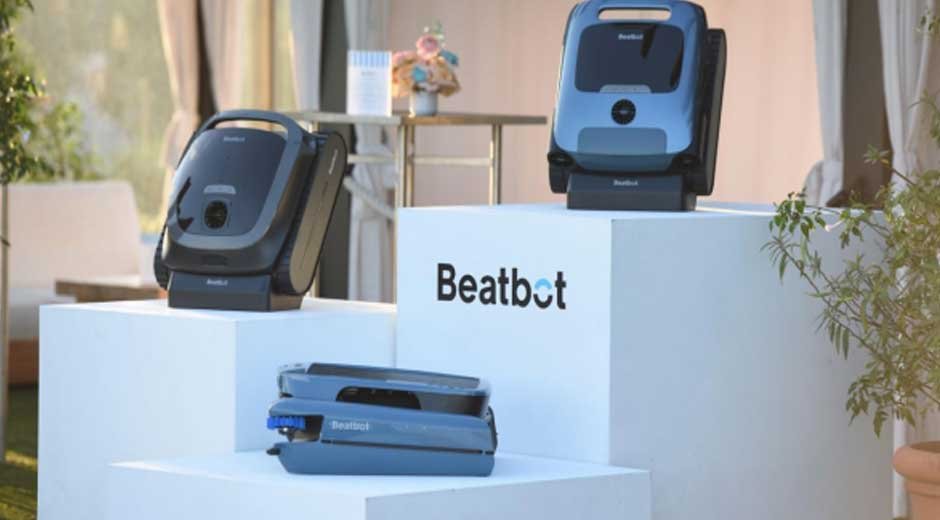Where To Attach Your Pool Vacuum Hose The Importance of Pool Vacuum Hose Placement Whether it’s a robot pool cleaner or a traditional pool vacuum that you’re using, learning how to connect the hose correctly will help make the proper equipment function properly. In this blog, we take you through some of the best practices while connecting the vacuum hose, where to attach it to your pool system, and how to achieve the utmost cleaning capabilities from your vacuum cleaner for the pool.
How to Attach a Pool Vacuum Hose to Your Pool System
The hook-up process of the pool vacuum hose is simple, but it is essential to do it correctly for the best suction and cleaning power. Whether you are using a pool vacuum robot or a swimming pool robot cleaner, here is how to properly connect the hose:
Connect to Skimmer: Most pool vacuum hoses connect at one end to the skimmer in your pool. The skimmer collects debris from the water and is typically fitted with a suction port feed for the vacuum hose. Insert the hose into the skimmer’s vacuum port and ensure the attachment is tight.
Inspect the Hose for Leaks or Kinks: Before vacuuming, check the hose for air leaks or kinking. These can interfere with the suction, reducing the effectiveness of the cleaning operation. Unwind the hose, if needed, and ensure it is not blocked.
Attach the Other End to the Pool Vacuum: Once the hose is secured to the skimmer, attach the other end to the vacuum cleaner. Robot pool cleaners, like the Beatbot AquaSense 2 Pro, do not require a hose because they work independently, having their own power source and filtration system. For conventional pool vacuums, however, ensure that the hose is firmly attached to the scrubber.
How to Connect Pool Vacuum Hose with Alternative Connections
Though this is the most common method to do so, there are other connection options when it comes to types of pool vacuum:
Pressure Side Connection: If you have a pressure-side pool vacuum (also known as a pressure cleaner), connect the hose to the return jet or dedicated pressure-side port in your pool’s plumbing. This is particularly helpful for bigger pools or pools that collect more debris.
Suction Side Connection: The vacuum hose connects to the suction side, the skimmer , or a dedicated suction line. This connection method comprises standard pool vacuum robots or traditional manual vacuums, which use the pool’s pump system to generate suction.
Method 2 for Connecting Robotic Pool Cleaners for the Pool Vacuum Hose
With a robotic pool cleaner like the Beatbot iSkim Ultra, you don’t need to hook the hose to your pool’s filtration system. These units operate independently and don’t need your pool’s suction. Just toss the robot into the pool; it will then roam around, sucking up dirt and debris from the floor and walls and storing it in a filter chamber. Robotic Pool Cleaners These are fully automated devices that clean the pools and require minimal intervention from the user.
Do You Have to Use a Pool Booster Pump?
If a pool vacuum robot is being used, it may require a pool booster pump. A pool booster pump can increase water pressure, so traditional vacuums have better suction power. It also assists robot pool cleaners with demanding jobs or heavily soiled pools, such as removing algae from pool walls.
In some cases, especially manual vacuums, a pool booster pump increases the amount of cleaning water, speeding up the cleaning time and making the vacuum cleaner with higher suction and less work.
This is how a pool robot removes algae.
Will a pool robot pick up algae is one of the most common questions pool owners ask. Some popular cleaning units include Maytronics pool cleaner and Beatbot AquaSense 2, which are built to deal with all sorts of debris, including algae. Most of these robots use a specialized filter capable of trapping even the tiniest particles, like algae, making your pool all the cleaner.
If you have thick algae growth, consider using your robot cleaner and other pool maintenance methods, such as learning to acid wash the pool to prevent buildup on pool surfaces.
for Maximum Efficiency: Pool Vacuum Hose Tricks
Here are some tips to connect the hose and get the best results when using your pool vacuum:
Fully Submerge the Hose: Before attaching the hose to the skimmer, fully submerge the hose in the pool to displace any air that has become trapped within the hose. This will minimize air bubbles from impacting the suction power.
Ensure Suction: After the hose is connected, ensure proper suction. If the suction is weak or ineffective, check for clogs or leaks in the hose and the filter’s cleanliness.
Make sure you can reach every corner: If you are hooked up to a valve with a hose, it is vital that you have a hose long enough to cover either side of your pool when tinning up. A short hose will limit the movement and efficiency of the vacuum.
Conclusion
Properly connecting your pool vacuum hose is crucial for effective pool cleaning. But whether you’re using a traditional vacuum cleaner or a tech-savvy robot pool cleaner, such as the Beatbot AquaSense 2, executing the correct workflow is essential for swimming pool cleaner performance. Tips include connecting the hose to the skimmer or pressure side, ensuring no air leaks, and utilizing a pool booster pump if required.


Comments are closed.